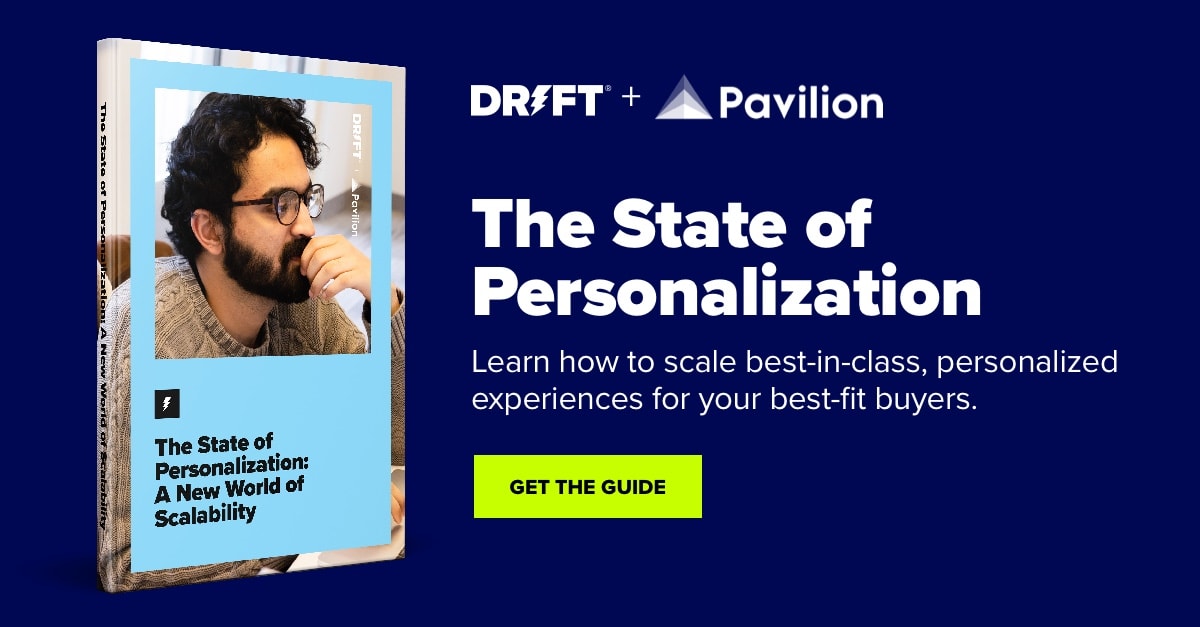Personalization can mean a lot of different things to different kinds of marketers. But all marketers should consider it a necessity.
66% of customers expect companies to understand their needs and expectations. With more and more B2B buying happening digitally, if this demand isn’t met, customers will simply take their business elsewhere.
Sadly, 57% of marketing and sales leaders aren’t happy with their current personalization strategy. That’s largely because they aren’t using the right tools: 60% of sales and marketing professionals do not leverage AI or machine learning to personalize, while 21% fail to use their existing customer data.
The first step to creating personalized experiences at scale is to invest in the right tech.
Today, I’m going to share with you some of the most successful examples of personalization in B2B tech to show you what’s possible when you have the right tools in play 👇
1. Commvault Increased Their New Business Revenue by 105% Using Custom Chatbots
Ideally, every conversation with a buyer is tailored to their needs and interests — even when you know nothing about them. But how do you do that without hiring dozens of sales reps to man your chat inbox?
Commvault, a provider in data protection and data management, had this exact problem. While they already had a live chat solution, they wanted to scale their ability to hold meaningful conversations and meet site visitors wherever they were in the buying journey.
To do this, Commvault created custom chatbots to personalize their messages based on specific web pages. For example, on their Distributed Storage page, the bot invites the visitor to chat with “🚫Stop the data infrastructure fragmentation. Let’s talk about modernizing your data.”
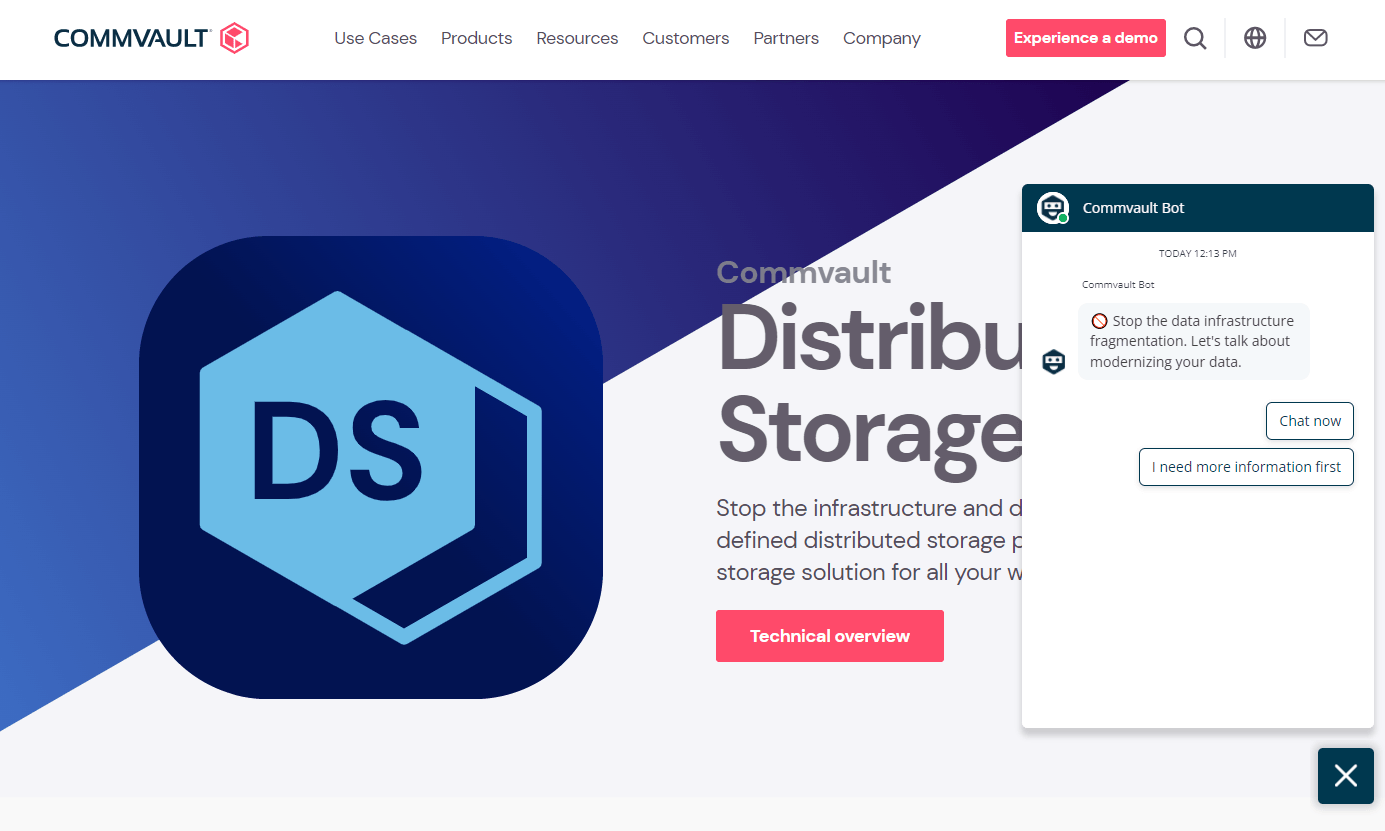
Meanwhile, on the SaaS Backup and Recovery page, the bot gauges the buyer’s interests by asking, “Are you looking for an on-prem or SaaS solution?”
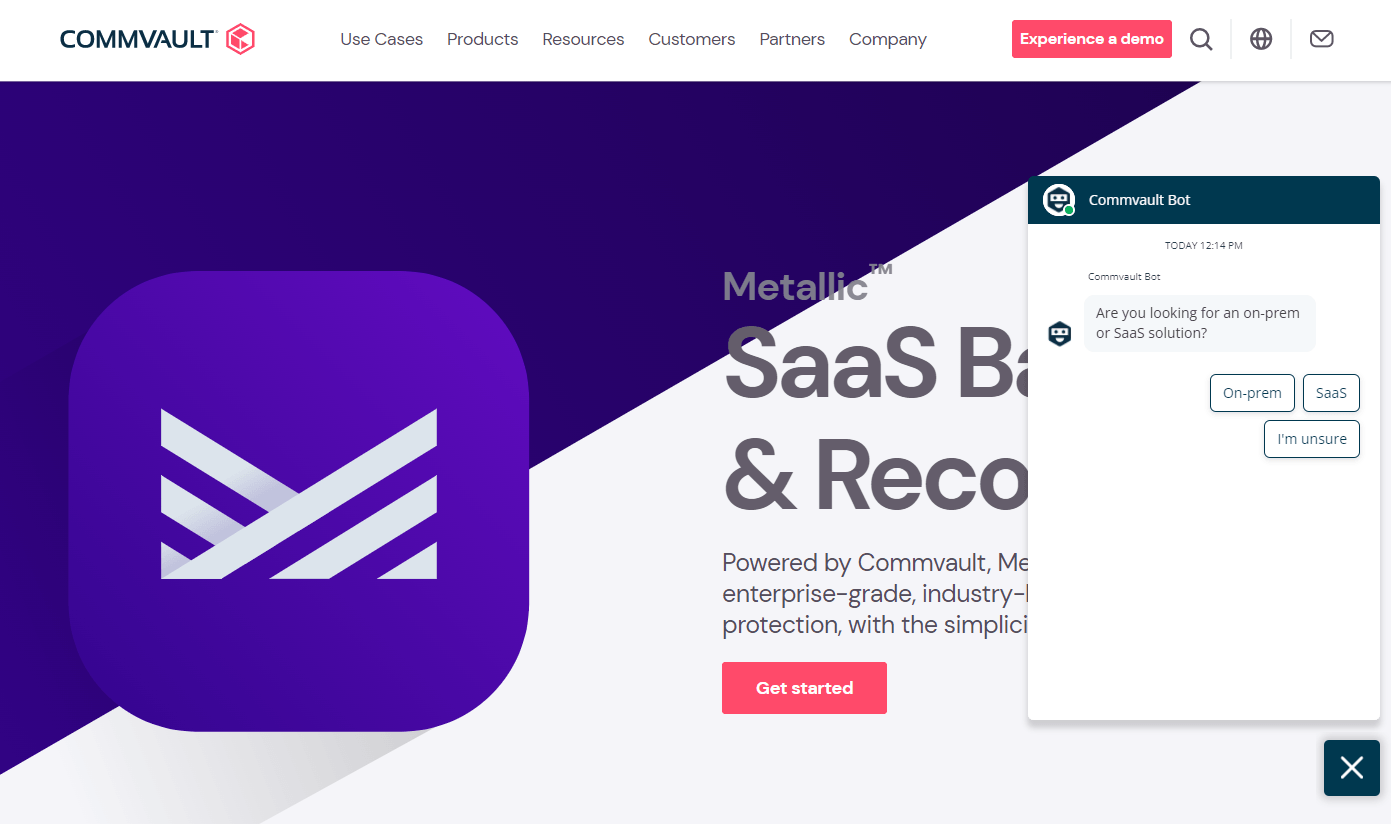
By customizing their chatbots, Commvault ensured their conversations were relevant to their buyer’s interests from the start. As a result, Commvault saw a 105% increase in new business revenue generated from chat.
2. Proofpoint’s Personalized Messaging Led to a 147% Increase in Email Submissions
Today’s B2B buyers are less willing to trade their contact information for an ebook or webinar recording. In fact, 81% of tech buyers who encounter gated content end up not downloading.
For many companies, collecting lead data is a challenge. Although Proofpoint, a leader in cybersecurity and compliance, boasted a 95% customer satisfaction rate and 90% renewal rate, their website wasn’t netting new buyers.
Proofpoint invested in chatbots to cater to the rapid digitization of B2B buying and deliver a personalized, frictionless site experience. With a good conversational flow in place, the Proofpoint bot is able to handle lead data collection.
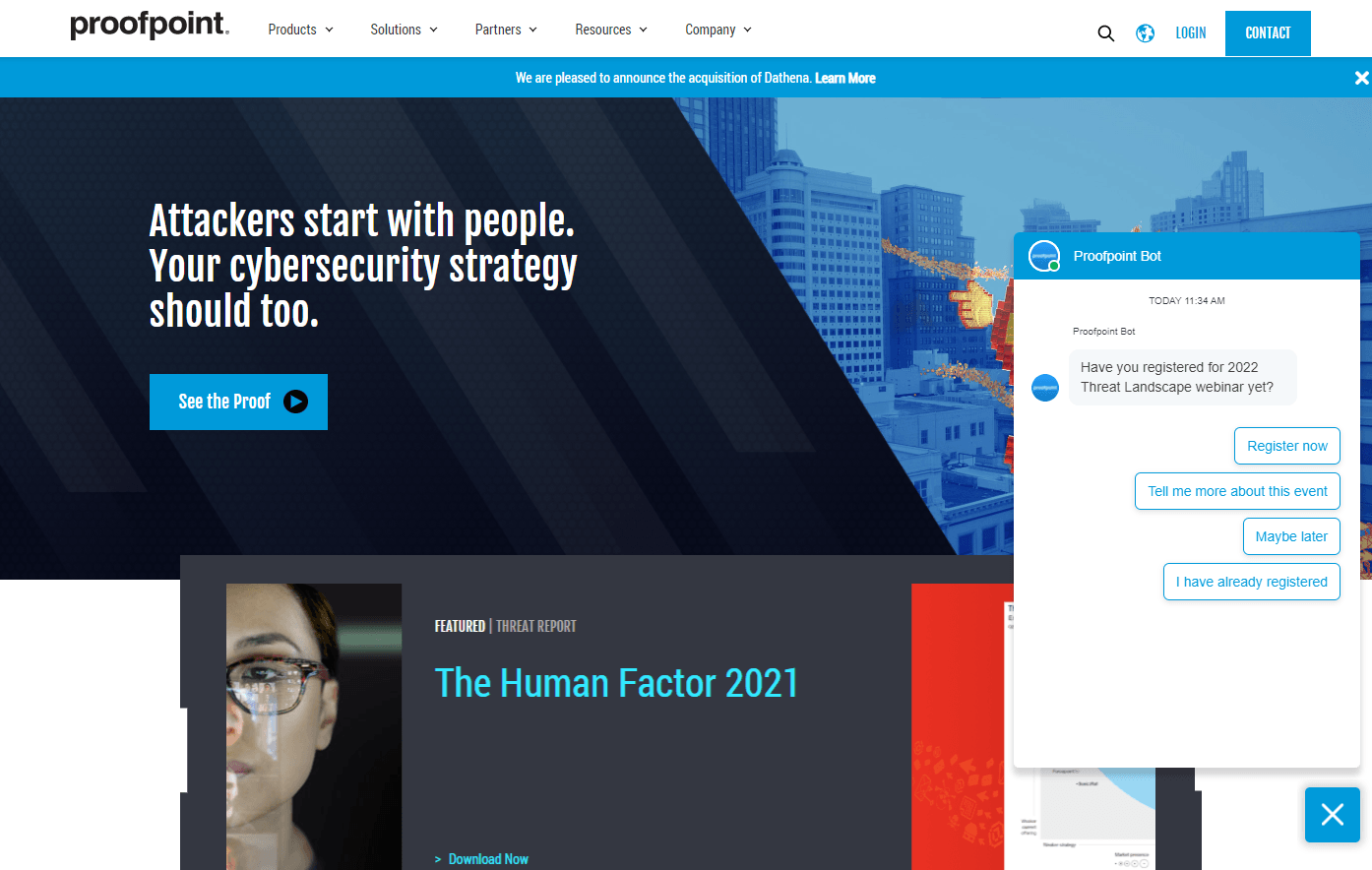
Proofpoint’s chatbots contributed to a 147% year-over-year increase in website visitor email submissions and a 628% year-over-year increase in pipeline generated from chat.
3. Okta Doubled Their MQL to SQL Conversion Rate with AI Chatbots
If you’re a company like Okta, you probably get a lot of site traffic. We’re talking one million unique hits per month. It’s impossible to pick out your qualified buyers and target accounts from this traffic with sheer manpower.
Okta, a leader in identity and authentication platforms, implemented Drift’s Conversational AI to have better conversations. Unlike traditional chatbots, AI chatbots can interpret and respond to open text by analyzing the intent of the buyer’s words. So, no matter the phrasing, the AI can serve the buyer’s needs.
As Rodolfo Yiu, former Senior Manager of Digital Marketing and Acquisition at Okta puts it, “The people who convert successfully, they typically engage with chat multiple times. That’s leveled up the way we look at automation in general — as a way to enhance the experience each time someone visits our site.”
In this vein, Okta uses AI chatbots to constantly personalize their engagement with buyers and instantly connect qualified leads with human sales reps. With AI chatbots, Okta has doubled their marketing-qualified lead (MQL) to sales-qualified lead (SQL) conversion rate.
4. WebPT Boosted Their Advertising ROI with Campaign-Specific Landing Pages
According to WordStream, the tech industry has the highest average cost-per-action in paid Google search (coming out a whopping $134 per action). So, it’s no surprise that WebPT pays over $150 per click for keywords like “physical therapy software.”
And with such an expensive pay-per-click (PPC) strategy, every click has to count.
For Josh Golden, former Digital Marketing Manager at WebPT, this meant implementing two new marketing tools to create customized landing pages. Josh used Unbounce to tweak landing page design and copy, then used a Drift chatbot to craft a personalized greeting.
For example, if the site visitor came to the webpage by searching “physical therapy billing software,” they would see this.
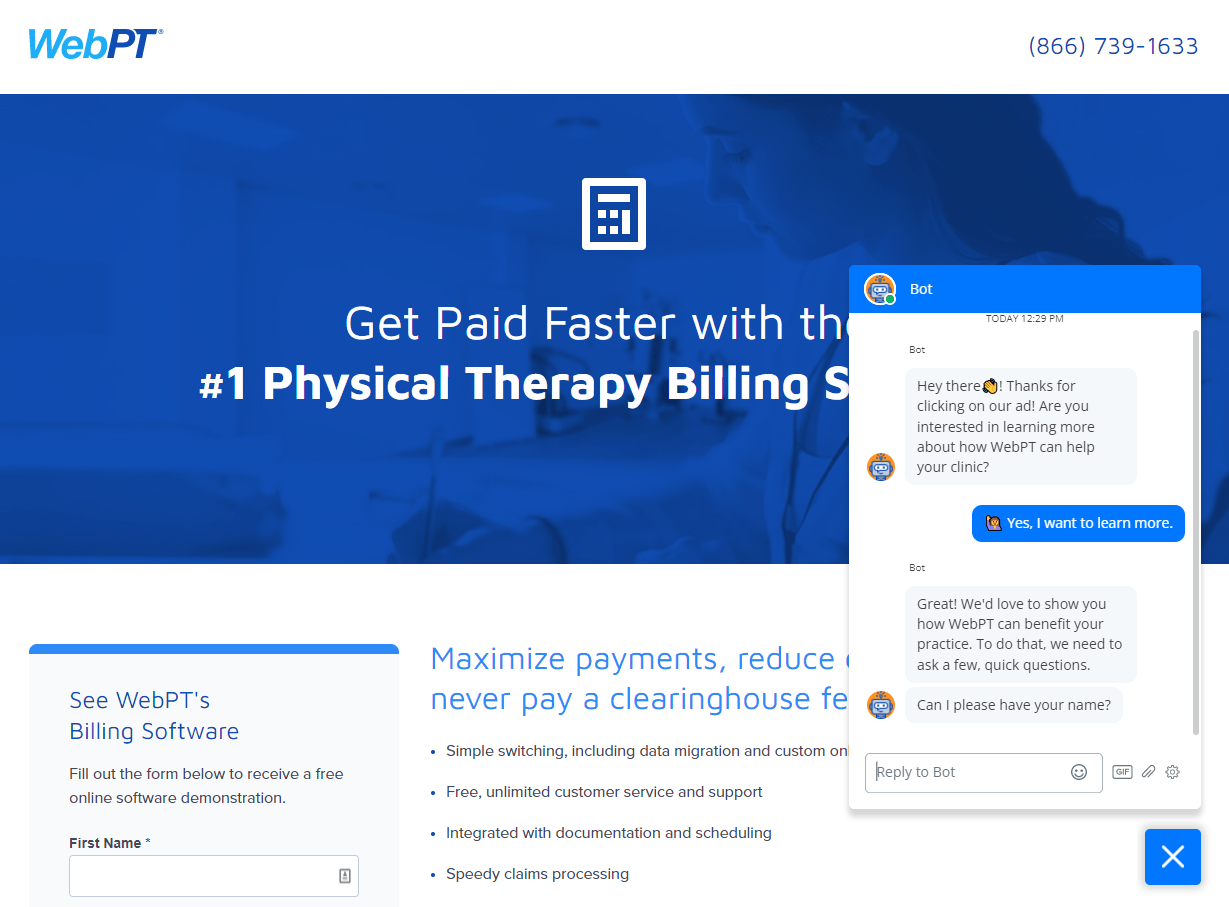
Once there, Drift’s chatbot is able to answer the buyer’s questions and cater to their needs based on where they are in the buying journey. Through campaign-specific landing pages, WebPT saw increased conversions from their Google and Bing ads and tripled their monthly chat leads.
5. PTC Converts MQLs 4x Faster with a Red Carpet Experience
Personalization improves the buying experience for all your site visitors — but personalization truly counts when it comes to your target accounts.
Before personalizing their site experience, PTC, a global software company, was qualifying new buyers through a 12-question form and subsequent phone calls. Without properly engaging with site visitors, they experienced a stall in pipeline progression.
PTC switched out their tech stack to focus on identifying and prioritizing target accounts so they could engage with them meaningfully. And we’re not just talking about calling people by name. For example, PTC’s chatbots target buyers based on the specific industry they work in.
Personalization isn’t limited to a single solution. PTC uses Drift’s integration with 6Sense to instantly pick out high-value target accounts from their website traffic. This way, the chatbot can connect target accounts with a sales rep right away or nurture them with relevant and engaging content.
With solutions focused on personalization for target accounts, PTC was able to identify 1,200 net-new, large high-intent accounts in under six months and convert their MQLs four times faster than before.
6. Lessonly Drove a 400% Higher Conversion Rate to Demo with Personalized Responses and Llama Jokes
Lessonly is a well-known brand in the highly competitive market of learning management software. But somehow their website conversion rate was slowing down. The marketing team wanted a new way to convert site visitors into opportunities.
“The experience of talking with or scheduling time with a human was clunky,” explained Ben Battaglia, former Director of Marketing at Lessonly. “Our website and existing tech stack were not equipped to offer differentiated, customer experiences via chat.”
Ollie Llama, Lessonly’s chatbot, not only helped to deliver resources to buyers and answer their questions. With witty hooks and llama jokes, it added a bright touch to their website.
Lessonly’s bot allows the buyer to lead the conversation in the direction they want, without it feeling like a sales pitch. This creative touch has resulted in a 400% higher conversion rate to demo and 20–30% more leads from content.
Final Thought
It can be easy to forget that your buyers are just as human as you. And, if you’ve ever been on the receiving end of a sales pitch, you’ll know how insincere the conversation can feel.
Personalization doesn’t have to be extremely complicated. It can be as simple as creating a playbook for your five highest-converting pages and giving visitors a few options to engage. But once you start rolling out the personalized experience, you’ll see that even the smallest touches can go a long way.





